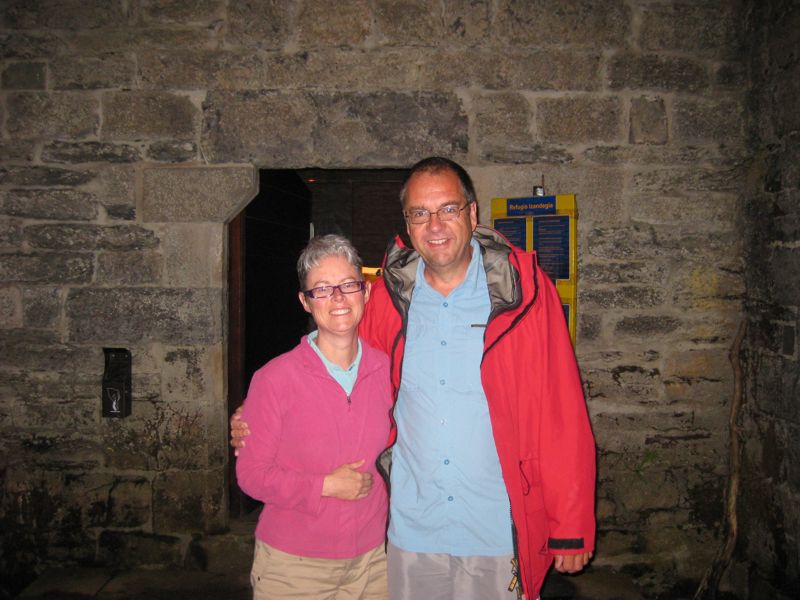Greg and Judy from Adelaide South Australia walked the Camino de Santiago for 680km from St Jean Pied de Port in France to Triacastella in Spain during August, September and October 2010.
The Way of St James has survived for above a thousand years. It was one of the most authoritative Christian pilgrimages during medieval times, together with Rome and Jerusalem, and a pilgrimage approach on which a plenary indulgence could be gained; other major pilgrimage routes include the Via Francigena to Rome and the pilgrimage to Jerusalem. Legend holds that St. James’s remains were conveyed by boat from Jerusalem to northerly Spain where he was buried on the site of what is now the district of Santiago de Compostela. When ever St James’s day twenty fifth of July falls on a Sunday, the cathedral declares a Holy or Jubilee Year. Depending on leap years, Holy Years occur in 5, 6 and 11 year intervals. The most recent were 1982, 1993, 1999, 2004, and 2010. The next will be 2021, 2027, and 2032. the way of saint james can take one of any large number of pilgrimage routes to Santiago de Compostela. Most commonly, as with most pilgrimages, the Way of Saint James began at one’s home and ended up at the pilgrimage site. However a few of the routes are considered main ones. During the Middle Ages, the route was highly traveled. However, the Black Plague, the Protestant Reformation and political turmoil in 16th-century Europe led to its decrease. By the 1980s, only a few pilgrims arrived in Santiago annually. Since then however the pathway has tempted a growing number of modern-day pilgrims from around the globe. The route was declared the first European Cultural Route by the Council of Europe in October 1987; it was also named one of UNESCO’s World Heritage Sites.camino



